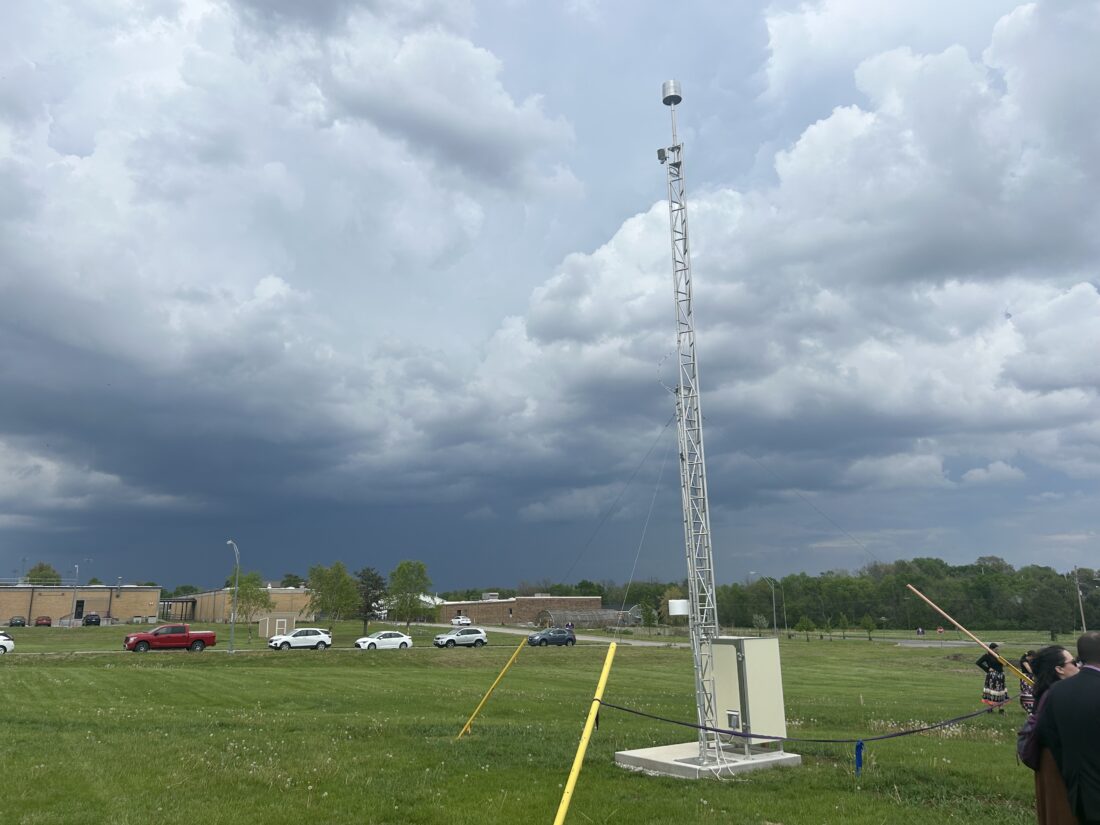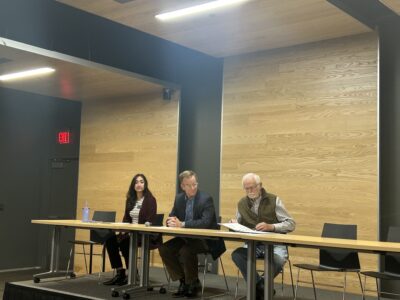At ribbon cutting for air quality monitoring station, Haskell and EPA officials celebrate their partnership

photo by: Bremen Keasey
Haskell Indian Nations University leaders and federal officials celebrated the ribbon cutting ceremony for aClean Air Status and Trends Network (CASTNET) air monitor Wednesday afternoon. The monitor measures air quality.
Dozens of Haskell Indian Nations University community members joined EPA officials on Wednesday at a ribbon-cutting for a device that will monitor air quality on campus and provide more opportunities for students to do hands-on environmental research.
The ceremony was to celebrate an air monitor for the Clean Air Status and Trends Network, or CASTNET. Though the ribbon-cutting was on Wednesday, the monitor has actually been at Haskell since November 2024, on the southern portion of the campus along Kiowa Avenue, and its data is already being recorded on the EPA’s website.
CASTNET is a 35-year old network that tests the air for pollutants, such as nitrogen dioxide and sulfur dioxide, and ozone levels in mostly rural areas around the country that would otherwise lack data. Pat Childers, a tribal program manager with the EPA’s Office of Air and Radiation, told the roughly 50 people at the ceremony that Indigenous communities were key to making CASTNET work. A number of the CASTNET system’s monitors are on tribal lands in the middle of the country, Childers said.
Along with an opening prayer song, the ceremony included remarks from other federal officials and Haskell leaders, including Haskell President Frank Arpan, Haskell Vice President Milford Muskett and professor Daniel Wildcat.

Frank Arpan, Haskell Indian Nations University’s president, speaking during a ribbon cutting ceremony for an air quality monitor Wednesday afternoon. He and others — including EPA officials — spoke about the positive relationship between the school and the EPA.
Arpan said the university had enjoyed a close relationship with the EPA and that he was appreciative of the opportunities it has given for students. He said the opportunities for research using the CASTNET monitor could help Haskell give its environmental students a “more holistic education that goes beyond the classroom.”
Wildcat shared a story from a conference he attended in the 1990s that discussed the uses of new technology like Geographic Information Systems for tribal nations. Wildcat recalled a “striking” man who looked like cowboy or rancher in all denim, listening and sitting quietly for most of the technical information sessions. When the presenters then asked the audience if they had questions, he stood up and said how useful the new technology seemed but asked how it follows “natural law.” The presenters asked him to repeat the question, and the man explained that natural law is “respecting and honoring the earth, wind and air.”
Wildcat felt that was an apt story filled with great Indigenous wisdom about how students should think of using the new tool. He said the data is important, but it will be more important how they can use the information to better protect the earth, wind and air.
Kansas Clifford Braveboy, this year’s Miss Haskell, said she was looking forward to what Haskell students would do with this new tool.
“I’m excited to see more opportunities for Indigenous students in STEM,” Clifford Braveboy said.
Jim Macy, the administrator for EPA Region 7, which covers Iowa, Kansas, Missouri, Nebraska and nine tribal nations, said he felt energized after touring the university and listening to students and faculty. Macy said the EPA and Haskell have been collaborating for over 25 years, and that this was a sign of continued growth in that partnership.
“Tools like this help further the relationship,” Macy said. “I’m excited to see how Haskell students can help (in environmental research).”

A Clean Air Status and Trends Network (CASTNET) air monitor installed at Haskell Indian Nations University campus. The air quality monitor, which was installed in November 2024 and is part of a national network, measures the levels of harmful pollutants like nitrogen dioxide and sulfur dioxide







